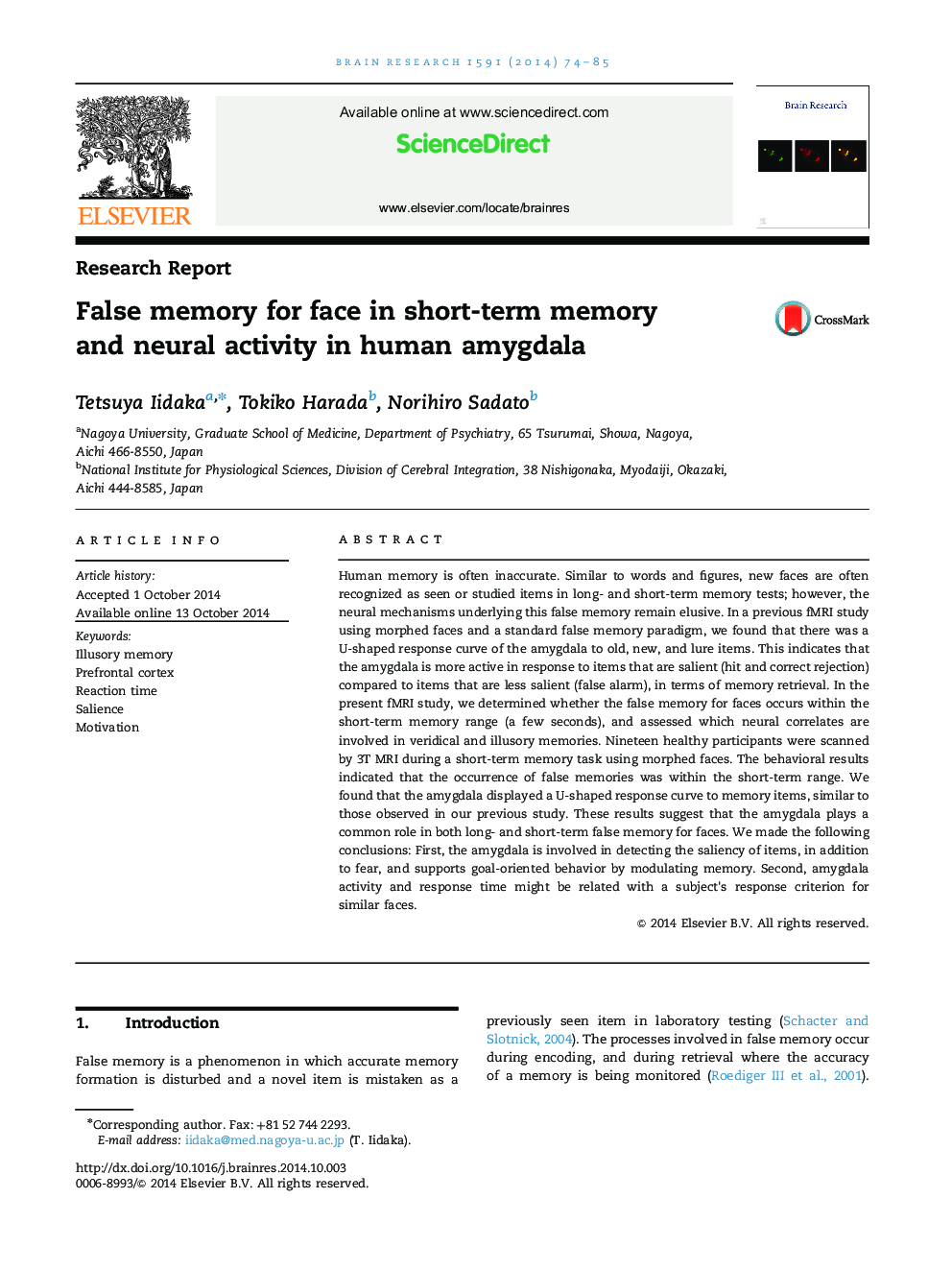| کد مقاله | کد نشریه | سال انتشار | مقاله انگلیسی | نسخه تمام متن |
|---|---|---|---|---|
| 6263224 | 1613848 | 2014 | 12 صفحه PDF | دانلود رایگان |
- False memory for face in short-term memory range was experimentally induced.
- Amygdala was partially involved in formation of false memory for face.
- The results accord with the motivation salience hypothesis of amygdala.
- Medial prefrontal cortex also plays a critical role in false memory.
Human memory is often inaccurate. Similar to words and figures, new faces are often recognized as seen or studied items in long- and short-term memory tests; however, the neural mechanisms underlying this false memory remain elusive. In a previous fMRI study using morphed faces and a standard false memory paradigm, we found that there was a U-shaped response curve of the amygdala to old, new, and lure items. This indicates that the amygdala is more active in response to items that are salient (hit and correct rejection) compared to items that are less salient (false alarm), in terms of memory retrieval. In the present fMRI study, we determined whether the false memory for faces occurs within the short-term memory range (a few seconds), and assessed which neural correlates are involved in veridical and illusory memories. Nineteen healthy participants were scanned by 3T MRI during a short-term memory task using morphed faces. The behavioral results indicated that the occurrence of false memories was within the short-term range. We found that the amygdala displayed a U-shaped response curve to memory items, similar to those observed in our previous study. These results suggest that the amygdala plays a common role in both long- and short-term false memory for faces. We made the following conclusions: First, the amygdala is involved in detecting the saliency of items, in addition to fear, and supports goal-oriented behavior by modulating memory. Second, amygdala activity and response time might be related with a subject׳s response criterion for similar faces.
Journal: Brain Research - Volume 1591, 3 December 2014, Pages 74-85
